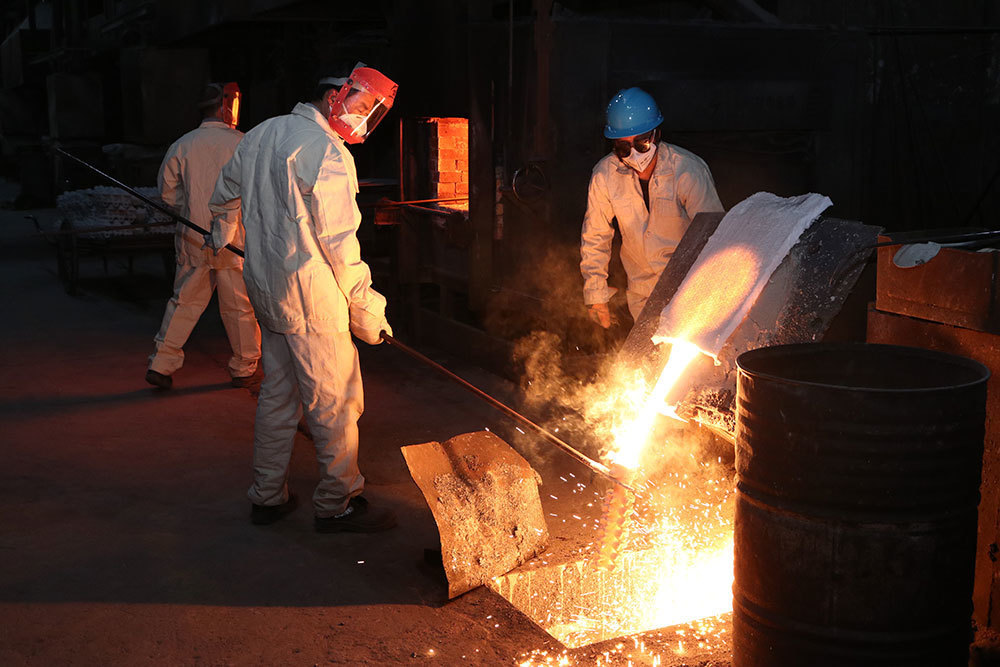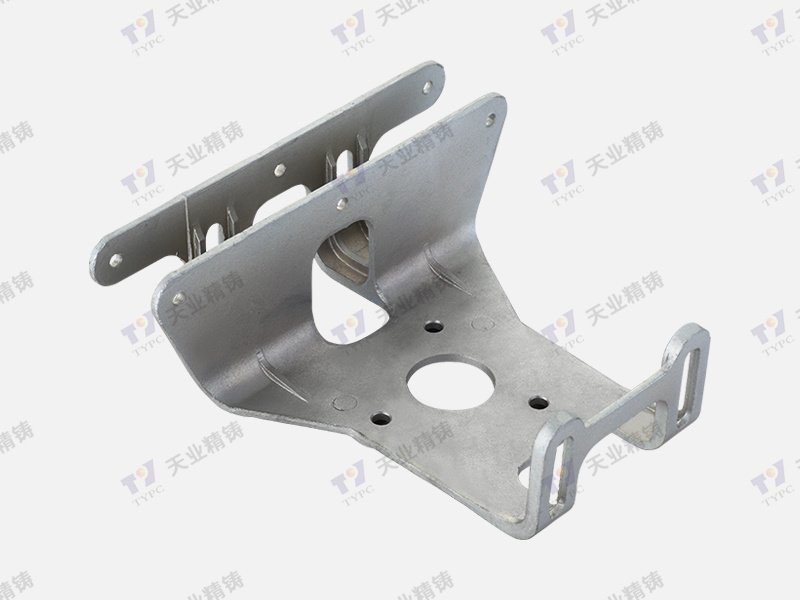2025-04-13
Innovative Investment Casting Techniques for Automotive Precision
Innovative Investment Casting Techniques for Automotive Precision
Table of Contents
- Introduction to Investment Casting in the Automotive Industry
- Understanding Investment Casting: A Brief Overview
- Advantages of Investment Casting for Automotive Components
- Innovative Techniques in Investment Casting
- 3D Printing Integration in Investment Casting
- Use of Advanced Materials in Investment Casting
- Sustainable Practices in Investment Casting
- Ensuring Precision and Quality in Automotive Parts
- Case Studies of Successful Implementation
- Future Trends in Investment Casting for the Automotive Industry
- Conclusion
- Frequently Asked Questions (FAQs)
Introduction to Investment Casting in the Automotive Industry
Investment casting, often referred to as **lost wax casting**, has emerged as a pivotal technique in the **automotive industry**. This method involves creating a wax pattern for each part, which is then coated in a ceramic shell. Once the shell is hardened, the wax is melted away, leaving a precise mold for metal pouring. This technique is integral to producing components with complex geometries, crucial for enhancing the performance and efficiency of automotive systems.
The automotive sector is increasingly demanding parts that not only meet stringent quality standards but also offer weight reductions and cost efficiency. Investment casting fulfills these needs through its ability to create detailed and intricate components with high dimensional accuracy.
Understanding Investment Casting: A Brief Overview
Investment casting is a manufacturing process that allows for the production of metal parts with intricate shapes. The process begins with creating a wax pattern of the part. This pattern is coated with a ceramic material to form a shell. Once the shell is hardened, the wax is removed, leaving a cavity that mirrors the required part's shape. Metal is then poured into this cavity, resulting in a high-fidelity reproduction of the original design.
**Key aspects of investment casting** include:
- **Precision**: Capable of producing parts with tolerances as tight as ±0.005 inches.
- **Material Versatility**: Compatible with a variety of metals including aluminum, stainless steel, and nickel alloys.
- **Complex Geometries**: Ideal for parts that require intricate details and thin walls.
Advantages of Investment Casting for Automotive Components
Investment casting holds several advantages that make it particularly suitable for the automotive industry:
1. **High Precision and Accuracy**: The investment casting process yields parts that require minimal machining, reducing waste and production costs.
2. **Material Efficiency**: The ability to cast complex shapes minimizes the need for additional material, providing weight savings that are critical for automotive performance.
3. **Diverse Material Compatibility**: Various alloys and metals can be employed, allowing for the optimization of parts based on their operational requirements.
4. **Enhanced Strength**: The casting process can produce strong, durable components that withstand automotive stresses and strains.
5. **Reduced Lead Times**: With advancements in technology, investment casting has become quicker, allowing for faster turnaround times for part production.
Innovative Techniques in Investment Casting
The automotive industry is witnessing a surge in **innovative techniques** within the investment casting process, enhancing both efficiency and performance. Below, we explore some of the leading advancements.
3D Printing Integration in Investment Casting
The integration of **3D printing** in investment casting has transformed the manufacturing landscape. By using 3D printing, manufacturers can create intricate wax patterns that would be challenging or impossible to achieve with traditional methods. This technology allows for rapid prototyping and the production of complex geometries, which significantly reduces lead times and costs.
3D printing enables:
- Customization of designs for specific automotive applications.
- Efficient production of low-volume parts.
- Enhanced design flexibility, allowing for innovation in component development.
Use of Advanced Materials in Investment Casting
The adoption of **advanced materials** plays a crucial role in enhancing the performance of automotive components. Innovations such as high-performance alloys, composites, and lightweight metals are being utilized to improve strength-to-weight ratios and thermal resistance.
Key advancements include:
- **Nickel-based superalloys** for high-temperature applications in turbochargers.
- **Aluminum alloys** for lightweight components that improve fuel efficiency.
- **Carbon-based composites** for parts that require high strength while minimizing weight.
Sustainable Practices in Investment Casting
As the automotive industry shifts toward sustainability, investment casting is evolving to incorporate **eco-friendly practices**. Innovations include:
- **Recycling of Materials**: Utilizing recycled metals not only reduces waste but also lowers costs.
- **Energy-efficient Processes**: Implementing energy-saving technologies during casting operations minimizes the environmental impact.
- **Green Manufacturing Techniques**: Developing biodegradable binders and coatings that replace traditional chemical processes.
These efforts not only enhance the sustainability of investment casting but also align with the growing consumer demand for environmentally responsible manufacturing.
Ensuring Precision and Quality in Automotive Parts
Achieving and maintaining precision and quality in investment casting is paramount for the automotive industry. Several factors contribute to ensuring high standards:
- **Rigorous Testing**: Conducting extensive testing during the casting process helps identify defects early on.
- **Digital Monitoring Tools**: Implementing real-time monitoring systems can track quality metrics and ensure adherence to specifications.
- **Quality Assurance Protocols**: Following strict quality assurance protocols helps maintain industry standards and certifications.
By prioritizing these measures, manufacturers can deliver reliable and high-performance automotive components.
Case Studies of Successful Implementation
Examining real-world applications of innovative investment casting techniques provides valuable insights into their effectiveness.
**Case Study 1: Engine Components**
A leading automotive manufacturer utilized advanced investment casting techniques to produce engine components that required high precision and durability. By implementing 3D printing for wax patterns, they achieved significant reductions in production time and costs while enhancing the strength of the engine components.
**Case Study 2: Structural Parts**
Another automotive company adopted sustainable practices in their investment casting process by using recycled aluminum. This not only reduced material costs but also positively impacted their environmental footprint, aligning with their corporate sustainability goals.
These case studies demonstrate how innovative techniques in investment casting can lead to substantial improvements in both quality and efficiency in automotive manufacturing.
Future Trends in Investment Casting for the Automotive Industry
Looking ahead, several trends are expected to shape the future of investment casting in the automotive sector:
- **Increased Automation**: The introduction of automation and robotics in the casting process will enhance efficiency and reduce labor costs.
- **AI and Machine Learning**: Implementing artificial intelligence and machine learning will optimize design and production processes, leading to even greater precision and efficiency.
- **Material Innovation**: Ongoing research and development will continue to improve the properties of casting materials, paving the way for stronger and lighter components.
As these trends evolve, investment casting will reinforce its critical role in the automotive industry, driving advancements in vehicle performance and sustainability.
Conclusion
Investment casting is at the forefront of innovation in the automotive industry, offering unmatched precision, efficiency, and versatility. By embracing advanced techniques such as 3D printing, utilizing sustainable practices, and focusing on modern materials, manufacturers can produce high-quality components that meet the demands of today's automotive market. As the industry continues to evolve, investment casting will undoubtedly play a crucial role in shaping the future of automotive manufacturing, ensuring vehicles are not only more efficient but also more environmentally friendly.
Frequently Asked Questions (FAQs)
1. What is investment casting?
Investment casting is a manufacturing process that creates precise metal parts using a wax pattern, which is coated in a ceramic shell. The wax is melted away, leaving a mold for metal pouring.
2. Why is investment casting preferred in the automotive industry?
Investment casting is preferred due to its high precision, the ability to create complex geometries, and its compatibility with various materials, making it ideal for automotive components.
3. How does 3D printing enhance investment casting?
3D printing allows for the rapid production of intricate wax patterns, improving design flexibility and reducing production times.
4. What are the sustainability practices in investment casting?
Sustainable practices include recycling materials, adopting energy-efficient processes, and using environmentally friendly binders and coatings.
5. What are the future trends in investment casting for the automotive industry?
Future trends include increased automation, the integration of AI and machine learning, and continued material innovation to improve component performance.
By focusing on these innovative investment casting techniques, the automotive industry can ensure the development of high-quality, efficient, and sustainable components that meet the evolving demands of consumers and regulations.









